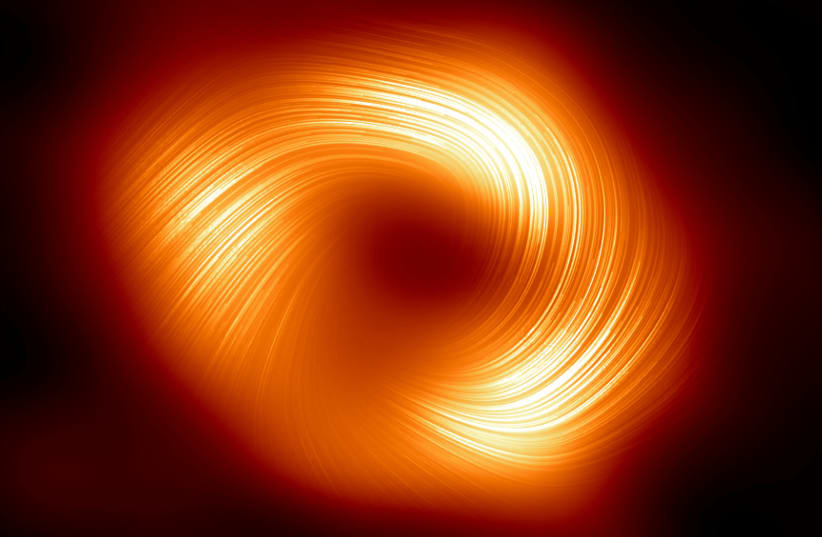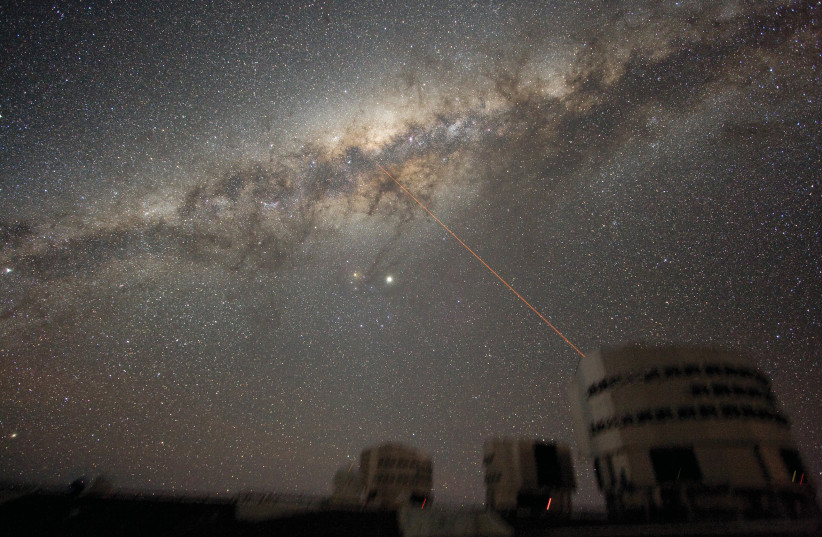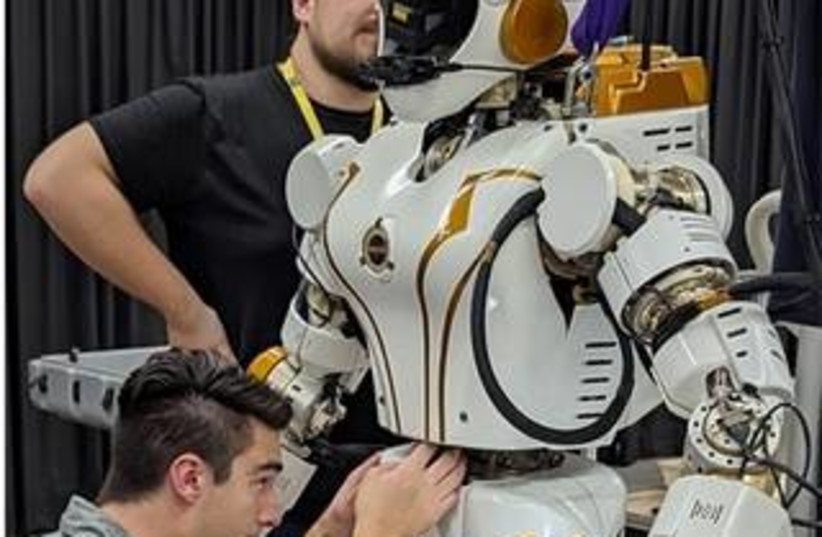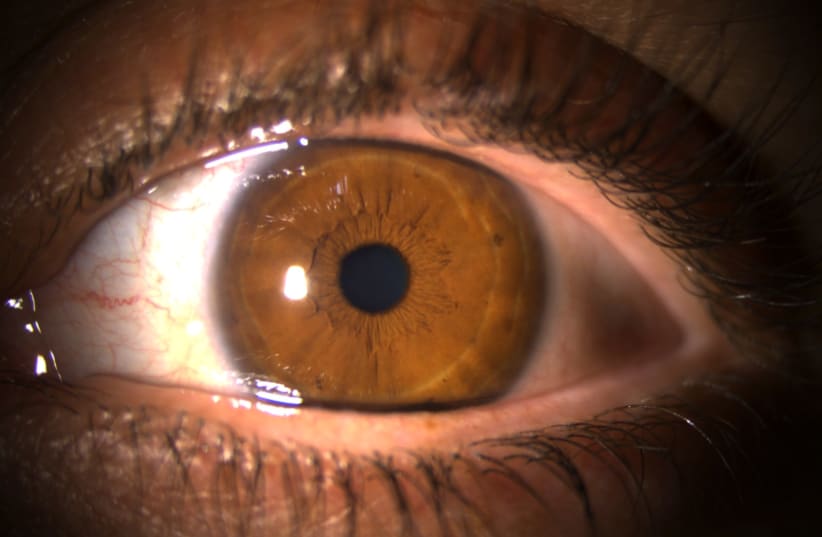Twisted magnetic field observed around Milky Way's central black hole
Black holes are extraordinarily dense objects with gravity so strong that not even light can escape, making viewing them extremely challenging.
Astronomers on Wednesday announced that they have detected a strong and organized magnetic field twisted in a spiral pattern around the Milky Way's supermassive black hole, revealing previously unknown qualities of the immensely powerful object lurking at the center of our galaxy.
The structure of the magnetic field emanating from the edge of the black hole called Sagittarius A*, or Sgr A*, closely resembles one surrounding the only other black hole ever imaged, a larger one residing at the center of a nearby galaxy called Messier 87, or M87, the researchers said. This indicates that strong magnetic fields may be a feature common to black holes, they added.
The magnetic field around the M87 black hole, called M87*, enables it to launch powerful jets of material into space, the researchers said. This indicates that while such jets have not been detected to date around Sgr A*, they might exist - and might be observable in the near future, they added.
The researchers released a new image showing the environment around Sgr A* in polarized light for the first time, revealing the magnetic field structure. The polarized light comes from subatomic particles called electrons gyrating around magnetic field lines.
Sgr A* possesses 4 million times the mass of our sun and is located about 26,000 light-years - the distance light travels in a year, 5.9 trillion miles (9.5 trillion km) - from Earth.
Image was obtained using Event Horizon Telescope
"For a while, we've believed that magnetic fields play a key role in how black holes feed and eject matter in powerful jets," said astronomer Sara Issaoun of the Center for Astrophysics - Harvard & Smithsonian and co-leader of the research.
"This new image, along with a strikingly similar polarization structure seen in the much larger and more powerful M87* black hole, shows that strong and ordered magnetic fields are critical to how black holes interact with the gas and matter around them," Issaoun added.
Black holes are extraordinarily dense objects with gravity so strong that not even light can escape, making viewing them extremely challenging.
"The magnetic field appears to be organized into a spiral, similar to M87*. This magnetic field geometry implies that the black hole can power very efficient jets that shoot off into the galaxy," said another of the researchers, Center for Astrophysics astronomer Angelo Ricarte.
The new image, like the previous images of Sgr A* and the M87 black hole, was obtained using the Event Horizon Telescope (EHT) international scientific collaboration's global network of observatories working collectively to observe radio sources associated with black holes.
A black hole's event horizon is the point of no return beyond which anything - stars, planets, gas, dust and all forms of electromagnetic radiation - gets dragged into oblivion.
"By imaging polarized light from hot glowing gas near black holes, we are directly inferring the structure and strength of the magnetic fields that thread the flow of gas and matter that the black hole feeds on and ejects," Issaoun said.
"Compared to the previous results, polarized light teaches us a lot more about the astrophysics, the properties of the gas, and mechanisms that take place as a black hole feeds," Issaoun added.
Light is an oscillating electromagnetic wave that lets objects be seen. Light sometimes oscillates in a specific orientation, and that is called polarized light.
The M87 black hole has a mass 6 billion times that of our sun and inhabits the center of a giant elliptical galaxy. It ejects a powerful jet of plasma - gas so hot that some or all its atoms are split into the subatomic particles electrons and ions - visible at all wavelengths.
The evidence for a jet flowing from Sgr A* is mounting, the researchers said.
"One thing we're really excited about is the prediction for a powerful jet. As our instrumentation improves in the upcoming years, if it exists, we should be able to tease it out of the data," Ricarte said.
The findings were published in the Astrophysical Journal Letters.























